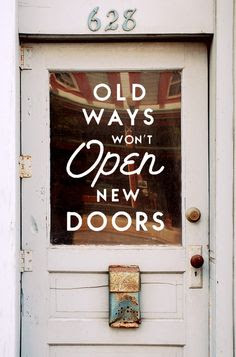Small nonprofits are wasting fundraising opportunities every day.
Oddly enough, this started with a conversation with my chiropractor.
She was telling me that she’d been trying to volunteer with the local pregnancy support group. And she was frustrated.
She told me a story that’s way too common. Maybe you’ve experienced this too. I sure have.
She reached out to them to volunteer. They asked for a bunch of information, which she gave. Then she didn’t hear a thing for weeks.
She called them again to see what was happening, because she really wanted to help. And again, nothing, no response.
After many weeks, she emailed one last time and got a lame “yeah, we’ve been busy” kind of email and nothing else. So she gave up.
She’s a bright, caring woman and has a LOT to offer. She might have been their best volunteer EVER. But they’ll never find out. Because they wasted the opportunity.
This happens every day in nonprofits all over the world and it has GOT TO STOP.
If we are serious about fulfilling our mission to end hunger or homelessness, eliminate euthanasia, get rid of waiting lists for our programs, or whatever it is we’re dreaming of, we cannot afford to waste a single opportunity to add resources to our operations.
Here’s the truth: You need resources to operate. You can’t run your nonprofit from your own pocket. So, everyone who wants to give you money or their time is a precious resource of an unknown value. You have no idea how much the next person who walks through your door might bring to you.
So, until you know otherwise, treat everyone as if they are capable of making a game-changing gift to your nonprofit.
It’ll help you stop wasting fundraising opportunities.
Here are a dozen ways that I see nonprofits waste opportunities for fundraising and resource development.
One of the best things you can do when it comes to building relationships with your donors is to work to become their favorite nonprofit. They are probably giving to a couple of other organizations, and all you have to do is shine brighter than they do.
If you’ll stop wasting your fundraising opportunities, and focus on giving your donor a great experience, you’ll see your donors become more loyal and their giving go up.
Then you can change more lives, because that’s what this is really all about.



 10. When you get turned down for a grant and you don’t follow up to ask questions. With grant writing, there’s a pretty good learning curve in the beginning. And one of the best things you can do is to learn from your mistakes. So, when you get that rejection email or letter, call the foundation (if you can) and ask them what you might have done to strengthen your proposal. Now, foundations are all different, and some are friendlier than others. You may not be able to contact them all, but contact the ones you can. You’ll eventually get one who will take the time to talk with you and give you good feedback. I once got a $40,000 refrigerated truck because I took the time to call a foundation and ask what I could do to strengthen my proposal after getting a rejection letter. The lady gave me good feedback (my budget section was weak), then she called me about 6 weeks later and said they had another grant opportunity and wondered if I’d be interested. I submitted a new proposal and got the grant. It was definitely worth the initial follow-up call!
10. When you get turned down for a grant and you don’t follow up to ask questions. With grant writing, there’s a pretty good learning curve in the beginning. And one of the best things you can do is to learn from your mistakes. So, when you get that rejection email or letter, call the foundation (if you can) and ask them what you might have done to strengthen your proposal. Now, foundations are all different, and some are friendlier than others. You may not be able to contact them all, but contact the ones you can. You’ll eventually get one who will take the time to talk with you and give you good feedback. I once got a $40,000 refrigerated truck because I took the time to call a foundation and ask what I could do to strengthen my proposal after getting a rejection letter. The lady gave me good feedback (my budget section was weak), then she called me about 6 weeks later and said they had another grant opportunity and wondered if I’d be interested. I submitted a new proposal and got the grant. It was definitely worth the initial follow-up call!




[…] Writing Project Donor Dreams: Check out this awesome donor upgrade strategy Get Fully Funded: 12 of the Biggest Fundraising Opportunities that Most Nonprofits are Wasting NPQ: Social Giving IRL (In Real Life) for Nonprofits Hilborn: Is it time to update how we define […]
This is awesome information especially for beginners like me in a developing country that is Kenya in Africa. I am in the process of establishing an independent fundraising consultancy – the first of its kind in East Africa. I will need lots of professional support and hope to find this in my association with you. Thank you these very eye opening insights.
I in the process of creating my website which I will provide as soon as it is up and running. Congratulations for your simple to navigate and well designed website.
Kind Regards,
CHRISITNA NJOKA
INDEPENDENT FUNDRAISER